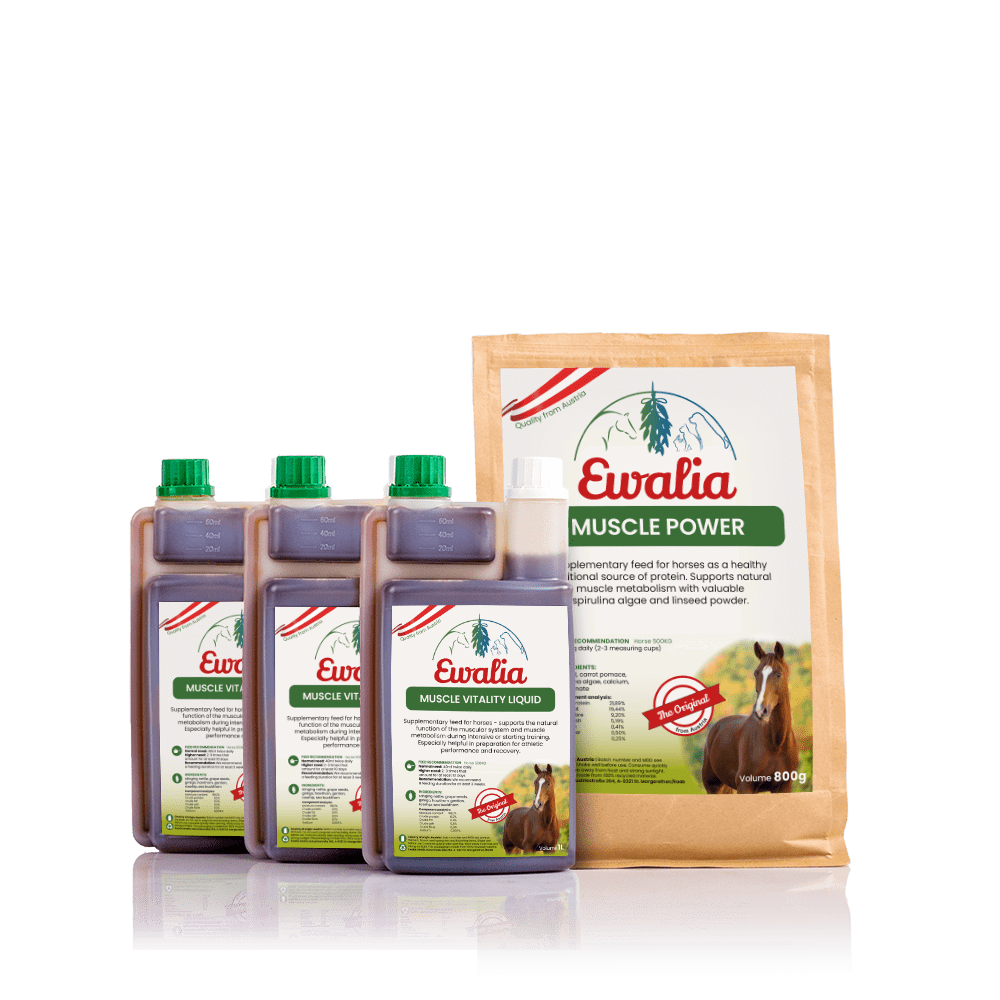Was ist dran an Mikroalgen?

Microalgae is trending as the new superfood. These microscopic organisms, especially spirulina and chlorella, are considered multi-talents due to their valuable bioactive substances with positive effects on animal and human health and well-being. Learn here how you can use microalgae to selectively supplement your animal’s feed ration:
What are microalgae?
Microalgae are some of the oldest organisms on our planet. They are estimated to have been around for about 2 billion years: their ability to produce nutrients through carbon dioxide from the atmosphere, sunlight, and water via photosynthesis has made them real survival artists. Microalgae prefer tropical and sub-tropical climates, and thrive in fresh-water or salt-water lakes. Much of it grows naturally in Central America, Southeast Asia, Africa, and Australia. In its native regions it has culinary uses as a valuable energy supplier: there are almost 300 calories in 100 grammes of dried microalgae. In Europe, spirulina and chlorella are primarily known as food supplements and today are cultivated in food-grade quality through aquafarming. The mature algae are harvested, dried, and crushed into a powder.
What’s in microalgae?
High in biologically valuable proteins, essential amino acids, omega-3 fatty acids, vitamins, minerals, and trace elements, microalgae are real power foods. With their total mass being 50–60% protein, spirulina and chlorella algae provide pure plant-based energy for boosting physical performance. Single-celled chlorella algae (Chl. vulgaris) have an intense green colour due to a high amount of chlorophyll. Chlorophyll helps to neutralise endogenous toxins and release them through the skin. No other plants contain as much chlorophyll as chlorella algae do. Multiple-celled spirulina algae (Arthrospira) are actually cyanobacteria, also known as blue-green algae. They contain high concentrations of calcium, iron, magnesium, beta-Carotene – a precursor to Vitamin A – and B vitamins, especially Vitamin B 12.
How do microalgae influence my animal’s health and well-being?
Microalgae’s valuable substances are both supportive to the body and can prevent many illnesses. Through their extremely high protein content, microalgae provide the body with basic components essential for survival: proteins are instrumental in tissue formation and are therefore also an important component of complementary feeds for muscle development. Essential amino acids are important components of proteins and must be obtained through feed, as the body cannot produce them in sufficient quantities. They are also the basis for many other compounds that carry out essential metabolic functions in the body. If the body lacks an amino acid or can no longer produce a compound of which it is a component, important bodily functions are no longer optimally assured. Microalgae contain all the essential amino acids the organism needs. Due to the substances they contain, algae are also used as natural detoxifiers. They absorb heavy metals and can lessen the side effects from body cleansing. This makes microalgae especially well-suited for convalescing animals that have received medications over long periods.
How can microalgae help my animal?
Microalgae support the immune system, protect the body from tissue damage and stabilise circulation and metabolism. Microalgae supplements are recommended in the following cases: - for immune reactions such as allergy-related respiratory illnesses or sweet itch - to support the binding of toxins and reduce oxidative stress to protect the intestinal mucosa in the elimination of harmful substances - to reduce inflammation - to help wound healing - to improve skin metabolism and soothe skin irritations - to develop healthy, strong muscles - in preparation for athletic performance and for regeneration
Can microalgae be harmful to my animal?
- Because of algae’s ability to absorb harmful substances from water, we only use algae from controlled cultures in our feeds. They are cultivated in closed systems and supplied with uncontaminated water. Food-grade microalgae are therefore free of toxins. - For horses, the high iodine content of some types of algae may pose a risk. Algae preparations should therefore be fed specifically according to need and manufacturer recommendations. The iodine content fluctuates amongst varieties but can also differ greatly depending on harvest times, the places the algae were grown, and processing methods. The microalgae from controlled algae cultures that we use contain only minimal quantities of iodine and can be added to the feed ration without hesitation.
How is microalgae used in feed?
This feed is based on powder made from dried microalgae: it is combined with palatable feed elements. Horses willingly eat it in both liquid and granulate form. Our Muscle Power for horses contains a proven mix of linseeds and microalgae to support muscle development, and in combination with Muscle Vitality Liquid creates the ideal supplement for horses in training. Dogs can now enjoy treats containing microalgae with double the effect on training! https://vet-magazin.at/wissenschaft/tier-ernaehrung/Spirulina-platensis-Futterzusatz.html I Ines Barkia, Nazamid Saari, Schonna R. Manning: Microalgae for High-Value Products Towards Human Health and Nutrition, 2019

















